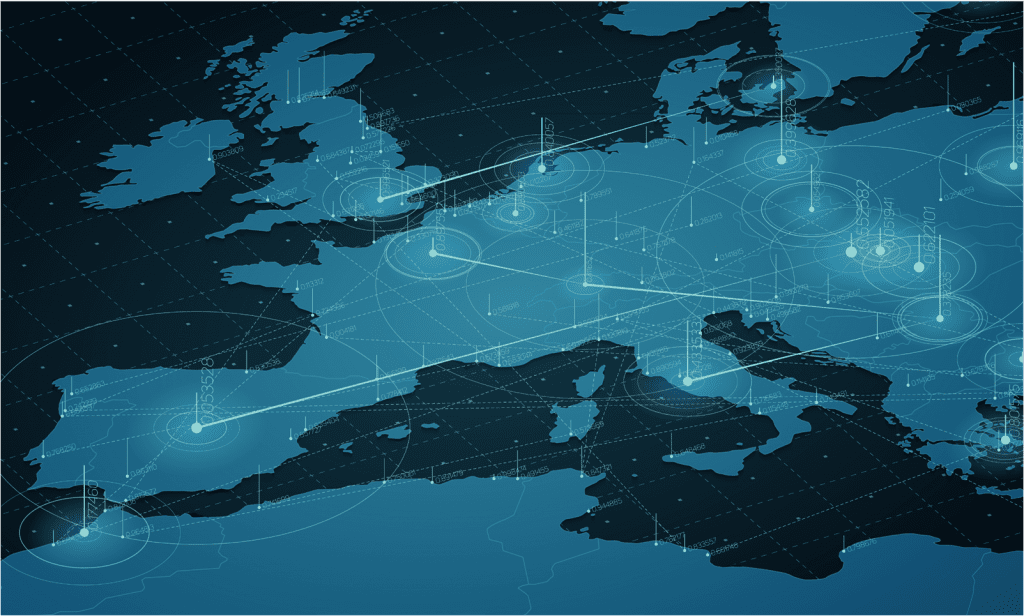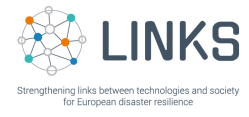
James Philpot, EUROPEAN ORGANISATION FOR SECURITY
Antonio Opromolla, LINK CAMPUS UNIVERSITY
While LINKS will initially engage with the Community for input in the development of the LINKS Framework, the Community will also provide validation of the Framework at each step of the design process. We also hope that the creation of the Community will benefit not only the LINKS Partners, but the members of the Community itself. Ideally, the Community will have a greater role beyond validating the LINKS research and outputs, as it is foreseen that the exchanges and activities organised through the Community will subsequently form a support network for practitioners and researchers (as well as other stakeholders), that will become part of the LINKS Hub.
The implementation and success of the Community is connected to the multiple levels of stakeholder engagement that is foreseen within the LINKS Community. The identified stakeholders are as follows:
● practitioners, who can be considered the main end-users of the LINKS project. Their early involvement in the research procedures will emphasise the bottom up approach that the project is taking and help improve the credibility of the research, as well as improve the eventual uptake of project outputs;
● industrial bodies and private sector manufacturers, that are relevant to the research and activities in the Community. These may be, and are not limited to, individual companies such as SME’s or local business networks and suppliers of goods in services, that may be engaged in disaster resilience efforts or provide goods or services that can be utilised for SMCS, crisis management or another relevant interest for LINKS;
● policy and decision makers which are legislative and executive authorities that operate at different spatial and legislative levels and have a large cross-sectoral impact. They are strongly connected to the LINKS Community because of the responsibility they share, such as disaster risk management or decisions regarding the implementation of e-Government services that can facilitate such management;
● the scientific community which is comprised of three entities: researchers, related projects and networks. Researchers are crucial for providing feedback on the validity of LINKS research processes and outputs and the understanding and analysis of the concepts of DRVP, DMP and DCT that LINKS will employ;
● finally, the citizens who can be divided into two key sub-categories: civil society and vulnerable populations. Civil society includes educational institutions, organized volunteers’ groups, and others such as social movement organisations and networks. These organisations reflect the interests and will of citizens, while remaining independent of the government or authorities and could offer a different perspective on the disaster risk management processes. Vulnerable groups are all the groups of people with a high level of exposure and risk to the hazards and scenarios that are central to the LINKS research.
As alredy emphasised, these stakeholders are at the same time the beneficiaries of the results of the LINKS project and the subjects who can contribute to give important contributions during all project activities, to create something that is really useful and of interest to them. In order to reach this objective, the reference to other projects, networks, and Institutions that already work on these issues is fundamental. Indeed, this aspect contributes in the European challenge of achieving high levels of resilience of societies, a goal that can be reached not only if a strong relation among citizens, governments, and civil society organisations networks is estabilished, but also if an extensive collaboration with expert communities of resilient societies is enabled.
So, to ensure that our project is known to these stakeholders and that the results are really useful to them, the collaboration with other European projects on the same topics is fundamental. For this reason, LINKS partners actively collaborate with the partners of the projects funded by the European Commission in the framework of Horizon 2020 Program, and in particular under the call “SU-DRS01 (Security-Disaster Resilient Society01): Human factors, and social, societal, and organisational aspects for disaster-resilient societies”.
The BuildERS (BUILDing European communities’ Resilience and Social capital) project goal is working with citizens, first-responder organisations, and tool developers, to define recommendations and new technological solutions in crisis situations through a “bottom-up” approach.
The specific final objective of ENGAGE (ENGAGE society for risks awareness and resilience) project is to demonstrate the fundamental role of citizens and communities to make the whole society adapt and prosper, especially after natural and man-made disasters.
Finally, RESILOC (RESIlient Europe and society by innovating LOcal Communities) goal is to identify new strategies for improving on the processes of preparedness of local communities against any kind of hazards, either planned or unplanned, bringing together their experiences with the commitment of national and supra-national actors.
Moreover, to make the project known involving the largest number of stakeholders as previously emphasized, the LINKS project is actually present in four main networks, which represent groups of Institutions working on the topics related to disaster resilience and risk management.
Community of Users (CoU), for example, provides a platform to share information on secure, safe, and resilient societies across Member States bringing together the latest policy and research developments and supporting those responsible for countering the various threats. Policy makers, scientists, industry, practitioners, NGOs, and the general public are the main categories of users involved in this community.
The Copenhagen Center for Disaster Research (COPE) aim, on the other side, is to facilitate multidisciplinary disaster research by supporting and promoting collaborative studies, sharing results from this research and circulating the results of these projects, thus advancing knowledge in the field. This is done primarily through the hosting of public events as well as internal seminars and workshops, publications, and strategic partnerships with academic institutions and relevant organisations working with disaster and humanitarian related matters.
Moreover, the Crisis Management Innovation Network Europe (CMINE) is the hub for crisis management professionals in the EU and beyond. It aims to foster innovation and research uptake in crisis management through cross-sector, multi-stakeholder dialogues around capability gaps and potential solutions.
Finally, the Disaster Risk Management Knowledge Centre (DRMKC) integrates existing scientific multi-disciplinary knowledge and co-develops innovative solutions for existing needs. Activities of the EC DRMKC support the translation of complex scientific data and analyses into usable information and provide science-based advice for DRM policies.
These networks represent fundamental communities for LINKS in order to receive inputs from all the stakeholders of the field and then involving them in the evaluation of the outputs of the project.
Due to the presence of LINKS in these networks and its collaboration with similar projects, the LINKS project has been presented in many events, with different purposes. In October LINKS took part, in collaboration with the to the International Day for Disaster Risk Reduction, with the aim of celebrate the importance of protecting lives, livelihoods and health and eliminating disaster risks – targets which are fully aligned with the Sendai Framework for Disaster Risk Reduction 2015-2030 adopted at the Third UN World Conference on Disaster Risk Reduction in Japan in March 2015. Due to the restrictions for the COVID-19, this came through an intensive social media campaign. Here, a summary of the main results can be read.
In November 2020 LINKS was presented in two events. The topic of the TIEMS 2020 Annual Conference was “Citizens and Cities Facing New Hazards and Threats“. Pierrick Fillon-Ashida of the Directorate General for the Research and Innovation of the European Commission, focusing on the importance of international cooperation on specific research and innovation issues, discussed LINKS as an example of existing international cooperation in the security field. An international cooperation which needs to go beyond the European context, extending it also to the outside. This is the reason why LINKS was presented also to the Showcasing EU-JAPAN Mobility event organised by Euraxess Japan in November, with the aim to emphasize the importance and the utility of working together and sharing knowledge also with partners outside the EU.
Finally, the project was presented in December 2020 during the 40th Regional Meeting of DPPI SEE (Disaster Preparedness and Prevention Initiative South Eastern Europe) as a part of a strategic development plan in the field of disaster preparedness and disaster prevention.

